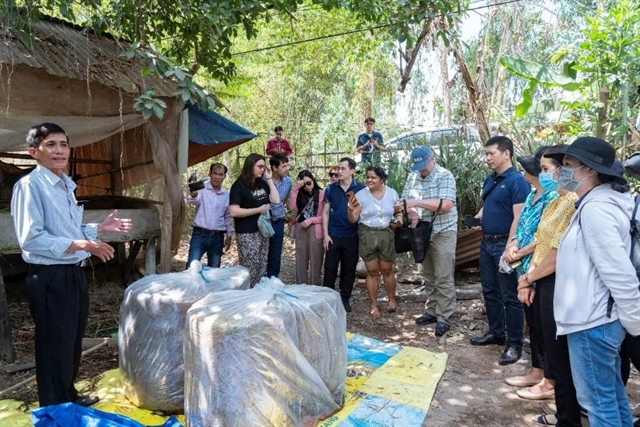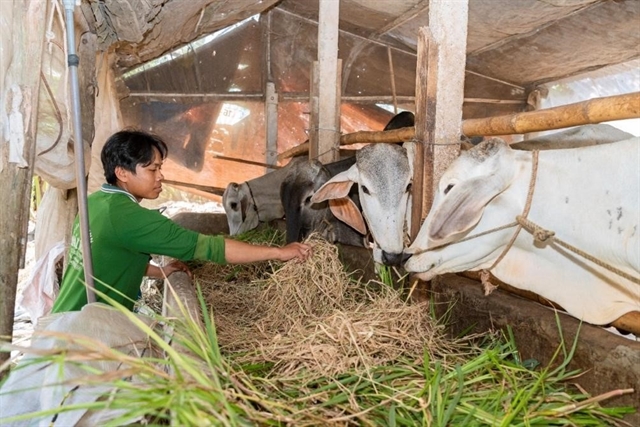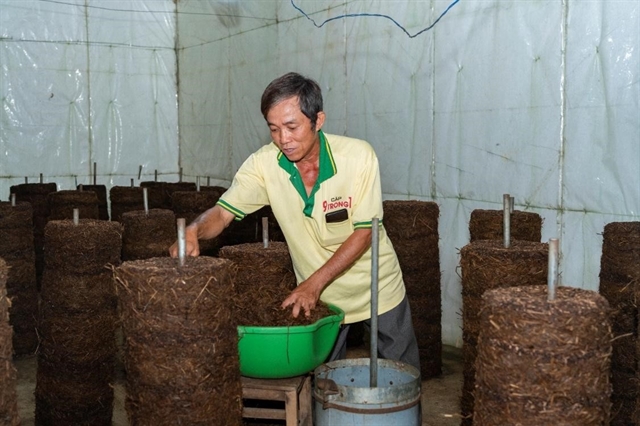Farmers compost rice straw for fertiliser and mushroom cultivation in An Giang
Society – Economy - Ngày đăng : 19:24, 17/10/2024
A project which aims to improve farmers' lives in An Giang Province by developing models to utilise and process agricultural by-products from rice straws to make valuable products has gained positive results.
The project is carried out by Ho Chi Minh City University for Natural Resources and Environment and the Long An Province Department of Natural Resources and Environment with the support of the Vietnam Association for the Conservation of Nature and Environment (VACNE). It has also been accomplished through a collaborative effort with the Global Alliance on Health and Pollution (GAHP) under the auspices of aid from the UK government.
Chau Thanh is a purely agricultural district of An Giang Province, where rice is the main crop, with a total area of more than 79,457ha. Only 36.7 per cent of the rice straw in the district’s growing area (29,167.65ha) is collected.
According to the project’s organisers, they decided to implement the project as they believed that farmers can only change their practice of burning straw in the field when there are models of using straw to create income.
 |
| A farmer introduces the model of composting rice straw with urea to feed cows. |
Looking at rice by-product utilisation models in place in the whole province, the project organisers set up three pilot projects for rice straw utilisation: growing mushrooms in rice straw, applying the model of composting straw with urea to feed cows, and composting straw as fertiliser.
 |
| A farmer feeds cows with rice straw composted with urea. |
The project has effectively raised awareness about the environmental damage and economic inefficiency of burning rice straws. Through media campaigns, technical guides, and social media outreach, it has romoted sustainable alternatives like using rice by-products for products like straw mushrooms and compost.
To foster adoption, the project organisers have developed practical training programmes for farmers, equipping them with the skills to implement these models and boost their income, like the case in Vinh Thanh commune.
The project has replicated the application of models to make use of waste from rice in the province by coordinating with communes to select 12 households to participate in the models. Under the programme, the households have been provided initial technical guidance and regular monitoring and support throughout the model implementation process. The programme has aided fees for four households (VND2 million for a household).
 |
| A farmer performs the indoor straw mushroom growing model. |
Finally, the project has deployed 12 models in the district, including four indoor mushroom-growing models in Vinh Nhuan and Can Dang communes; four composting models; and four models of composting straw with urea for animal feed in Vinh Thanh, Tan Phu, Binh Hoa, and Hoa Binh Thanh communes.
The models have been welcomed by farmers because, in addition to environmental benefits, they also bring specific economic efficiency to households. Interviews with 11 farmer households implementing composting from straw showed that the model scale is from 8-20sq.m (using 25-80 rolls of straw). After deducting the initial investment costs and each crop, participants will have an additional income of VND3.1-5 million.
Interviews with seven households growing mushrooms indoors showed that with a scale of 20-300sq.m (using 40-500 rolls of straw), after deducting the initial investment costs and actual costs of each crop, they will have an additional income of VND3-12 million. Meanwhile, composting with urea to make animal feed will save labour days compared to cutting grass to feed cattle. Besides, the straw rolling service by machine also brings a profit of about VND7 million for the straw rolling machine, reaching 4ha per day and 200 rolls per ha. The field owner will be paid VNĐ500,000 per ha.
The project’s results show that using straw in beneficial models has contributed to reducing air pollution, limiting the greenhouse effect, returning nutrients to the soil, limiting soil loss, and minimising rice-growing land contamination.
The models are suitable for local development conditions as they create more jobs for rural workers, take advantage of idle labour, and create conditions for gender balance. This is a favourable premise for replicating the models throughout An Giang province, where up to 70 per cent of the natural area is used for rice cultivation. VNS
